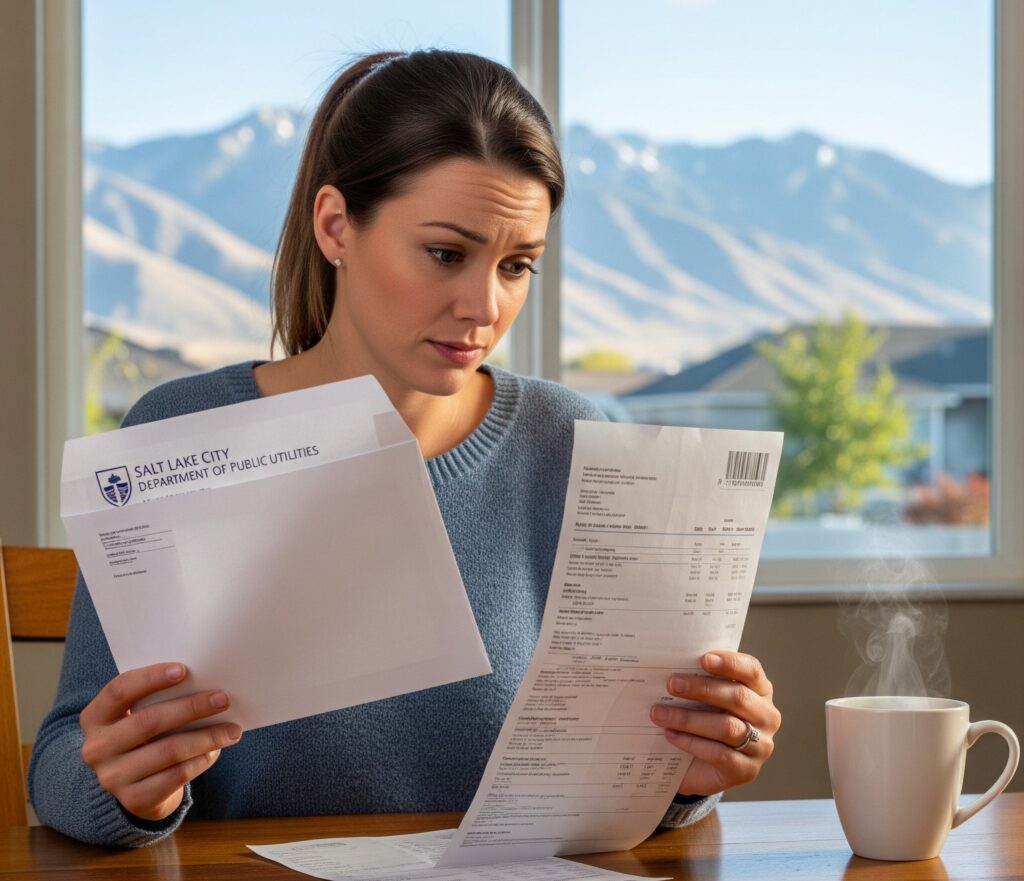If you’re in Salt Lake City or the surrounds and looking to switch to artificial grass from real grass, one of the first considerations is likely going to be the cost.
There’s good news here. While the upfront cost of artificial grass in Utah is higher than for real grass, significant cost savings can be made over the years with much lower maintenance costs.
Once installed, artificial turf starts paying back the investment from day one. No watering, lawn care costs, tools, lawnmower fuel or fertilizers mean that you save time and money by switching from natural grass.
Here’s what else you need to know about artificial turf costs in Utah…
ARTIFICIAL TURF COSTS UTAH: SUMMARY

When the cost of artificial grass is averaged out over its long, 10- to 20-year lifespan, it has a significantly lower cost of ownership than real grass and provides an excellent return on investment—wherever you are in the U.S.
The cost of living in Utah is similar to (or slightly lower than) the national average, so installing artificial grass also tends to cost around the national average.
Artificial grass prices are usually quoted per square foot (sq. ft.) in the U.S. The average cost of artificial grass installations around the country is $9-12 per sq. ft. for materials and labor. Cheaper options are available (at around $6 per sq. ft.) but are not necessarily recommended. The cost varies considerably according to the factors discussed below. The best quality synthetic grass with professional installation may cost $15-20 per sq. ft. including labor.
If we take a range of $10-15 per sq. ft. for artificial grass in Utah, a 1,000-square-foot lawn will cost anywhere between $10,000 and $15,000.

GET A FREE ARTIFICIAL GRASS ESTIMATE IN UTAH
If you’re in Salt Lake City or the surrounding areas, the experienced team at Rocky Mountain Turf will break down the costs for you in a free estimate. Contact us here.
ARTIFICIAL GRASS COST CALCULATOR FOR UTAH
We’ll look at all the factors involved in calculating the cost of artificial grass below—but you can do a basic calculation for landscaping an artificial backyard lawn by simply multiplying the surface area of the space by the price per square foot of the turf.
The average size of a backyard in Utah is 16,878 square feet. While that average drops to 7,278 square feet in Salt Lake City, most homes can still accommodate a 1,000-square-foot lawn (just over half the size of a tennis court) quite comfortably.
Some homes have lawns of 5,000–10,000 square feet but even if your yard is below average size, there are plenty of artificial grass ideas for small gardens that work well.
Let’s consider the 1,000-square-foot example:

- If the average per-square-foot installation cost is $9, the total cost for a 1,000-square-foot lawn is $9,000 (fully installed).
- If the average per-square-foot installation cost is $15, the synthetic lawn costs $15,000.
- If the average per-square-foot installation cost is $20, the synthetic lawn costs $20,000
Clearly, the cost per square foot has a big impact on the overall installation costs of your turf area.
The business directory Manta estimates that the average cost of artificial grass installation in Salt Lake City in 2024 is just over $10,000. However, this tells us nothing about the size of the area or the quality of the turf installed.
Let’s compare the cost of some different-sized lawns in Utah using a cost per square foot of both $10 and $15:
| Lawn Size | Average Overall Cost $10/Sq. Ft. | Average Overall Cost $15/Sq. Ft. |
|---|---|---|
| 500 sq.ft. | $5,000 | $7,500 |
| 750 sq.ft. | $7,500 | $11,250 |
| 1000 sq.ft. | $10,000 | $15,000 |
| 2000 sq.ft. | $20,000 | $30,000 |
| 3000 sq.ft. | $30,000 | $45,000 |
This is a useful guide to use. Prices are fully installed, including all materials, labor, and cleanup. For larger spaces, you may be able to negotiate a lower per-square-foot rate if there are no installation complications.
Ultimately, the cost of an artificial grass installation will depend on quite a bit more than simply the size of the space, though…
GET A FREE ARTIFICIAL GRASS ESTIMATE IN UTAH
If you’re in Salt Lake City or the surrounding areas, the experienced team at Rocky Mountain Turf will break down the costs for you in a free estimate. Contact us here.
WHAT FACTORS AFFECT ARTIFICIAL TURF COST IN UTAH?
Artificial turf varies in quality—both off the shelf and how it’s installed.
Besides the size of the space, which other factors affect the ultimate cost of the artificial grass you install?
The most important considerations are the quality of the turf and its materials, the purpose/intended usage of the space, the ground preparation needed/difficulty of installation, and the expertise you hire to install the turf.
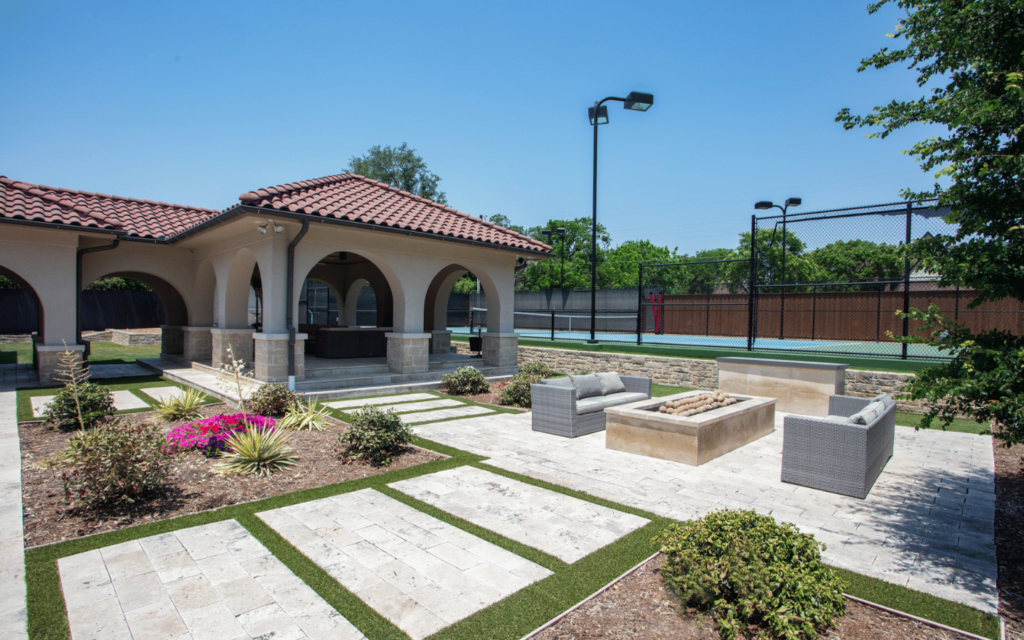
Let’s take a closer look at each of these (and a few other factors) below…
Intended usage
This is dealt with in detail in a later section but there are many potential usages for artificial turf in Utah backyards and businesses.
Here are just a few:
- A traditional backyard lawn
- Around a swimming pool
- A customized putting green
- A kids’ play area
- A dog run with pet turf
- A front yard or side yard area
- A sports field
The usage will impact the type and quality of turf you need, especially how durable it needs to be as well as its look and feel (aesthetics).
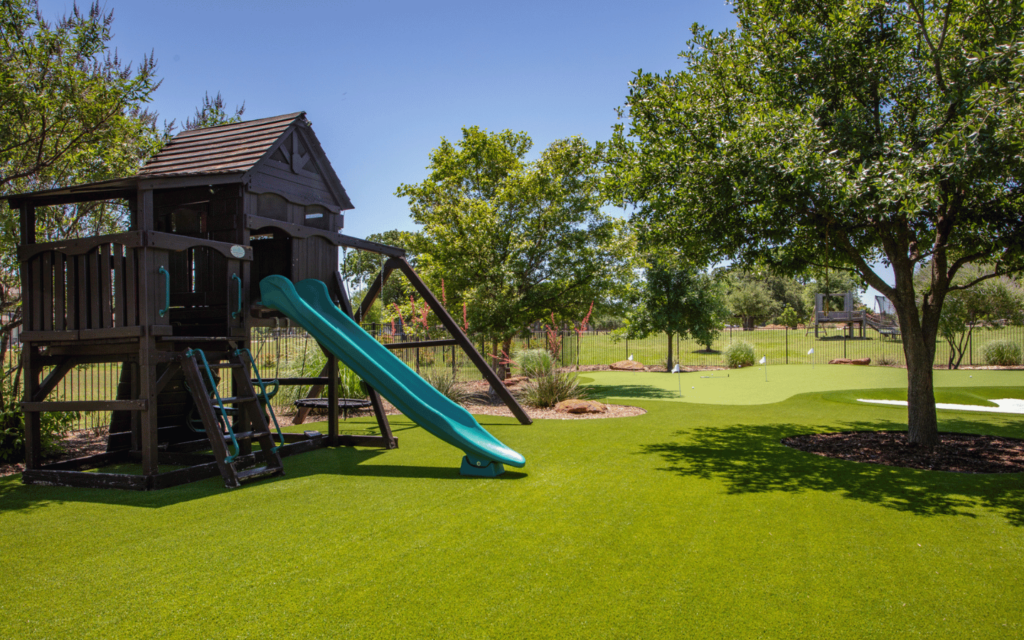
The turf quality and features
In the past two decades, technological advancements have resulted in synthetic grass that looks and feels more realistic and inviting. It has also provided many different types of artificial grass—with various brands, materials, blade shapes, weights, and densities of turf to choose from.
The price of artificial turf in Utah varies according to the following qualities…
The choice of material:
Polypropylene is often the cheapest material but is generally the least durable and may suffer in higher temperatures. Polyethylene is more durable and better for high temperatures and nylon’s extra durability makes it the choice for some sports fields and very high-use areas.

Rocky Mountain Turf recommends polyethylene turf for most applications if you’re looking to get the most bang for your buck.
Face weight of turf
The face weight of synthetic grass is a measure of the weight (in ounces) of grass fiber per square foot. It excludes the weight of the backing and provides a good indication of turf durability and how realistic it looks.

A good general face weight for backyard turf is 50-60 ounces but the best turf is 65-100 ounces. The greater the face weight, the more suitable the turf is for heavy usage, generally speaking—and the more you can expect to pay for the extra quality. A good indication is around $1 per square foot extra for every 10 ounces in face weight.
Rocky Mountain Turf recommends a face weight of 65-100 ounces for multi-purpose areas with a lush appearance and good durability.
Blade shape
Multiple blade shapes for artificial turf provide a wide range of different qualities. Here are the main ones you’ll come across:

The blade shape can affect the appearance and feel of the grass, as well as durability, drainage, and cost. You will likely pay a premium for softer, more durable synthetic grass.
S-shaped and Omega-shaped blades are generally the most economical. Diamond and M-shaped blades may cost a little more, all else being equal.
Thatch is the brownish, dead-looking blades between the main blades of grass, which adds a realistic touch—but not all turf products have this, which is another thing to bear in mind.
Rocky Mountain Turf recommends a blade design that deflects light and is robust enough to withstand the level of foot traffic the area expects to receive.
The shape and accessibility of the area
As well as the design and quality of the turf itself and the size of the installation, artificial grass costs in Utah are affected by the shape and accessibility of the area.
Most yards are not perfectly symmetrical and existing features may require considerable skill and experience from turf specialists to shape the installation around them without creating unwanted lumps or creases in the artificial grass.

Pathways, pool areas, patios, playground equipment, flowerbeds, trees, and so on all need skillful shaping of the turf. Some apartment owners need their grass shaped around balconies or hard-to-access rooftop areas. This can add to the cost of installation due to extra materials, labor, and equipment.
Sloped areas are another challenge for turf installation teams. A very light slope for drainage is normal but artificial turf can slip if not professionally installed with precautions taken to hold the turf in place on a major gradient.
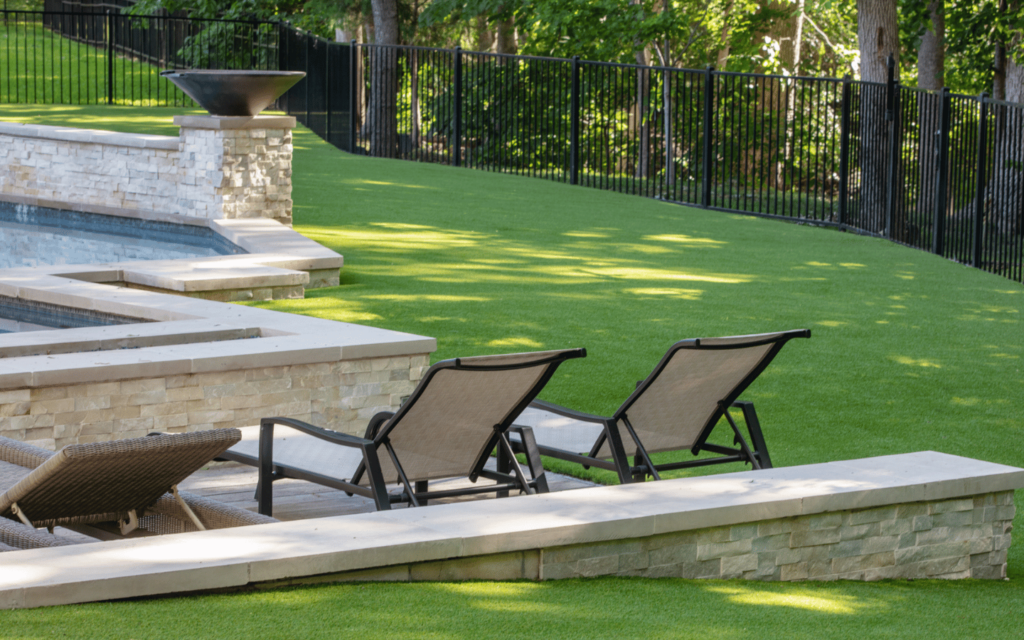
Ground preparation expertise
An artificial grass area consists of a lot more than the blades you see on the surface and installing it involves a lot more than rolling out a carpet on a flat surface. Below the surface of artificial grass, considerable work must be done to ensure that the turf performs well and lasts the distance.
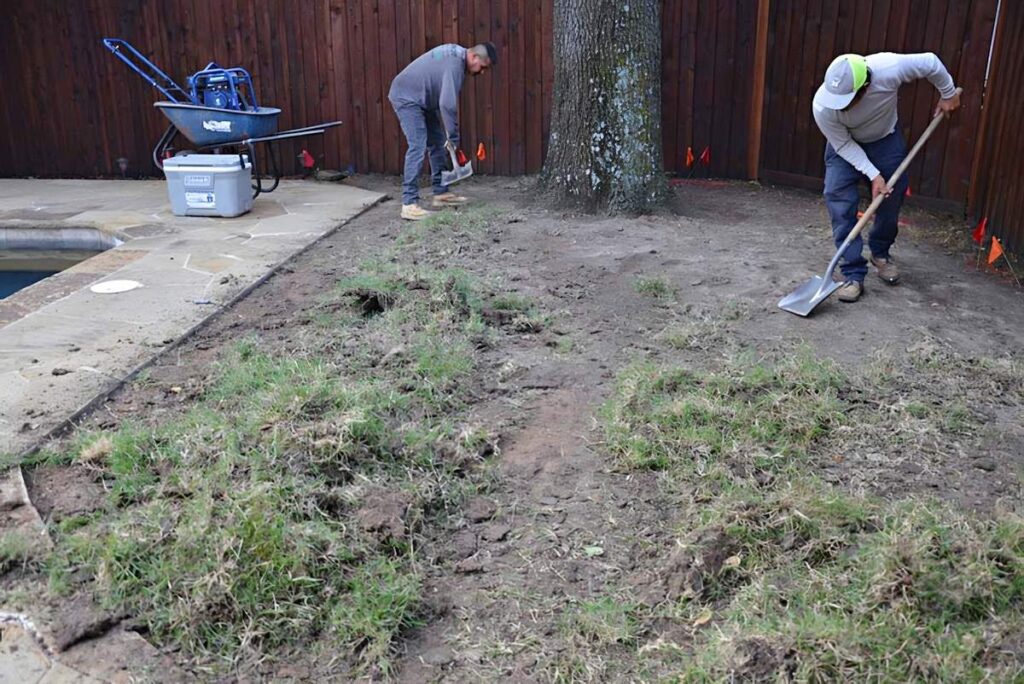
There are base layers, compaction, wire mesh for slopes, shock pads for play areas, membranes, drainage, and more to consider well before the turf is laid. If your home has dogs or other pets, this also needs to be assessed.
Extra materials for the base layer will be required and this can add $300-700 to the overall cost of a 1,000 sq. ft. lawn. A weed barrier to prevent weeds from growing through can add an extra $250–$600 for a 1,000 sq. ft. lawn.
The expertise of the installation team to assess requirements and prepare the ground properly can greatly affect the overall cost of artificial turf in your Utah home. Cutting corners here can be costly so be sure to hire an installation team with the necessary experience and skills.

The quality of the infill
Besides the actual grass and what goes under the turf, artificial grass costs in Utah are affected by what goes on top of the grass after installation.
Infill should be used to help the grass blades stand upright and make the grass appear more realistic. In some ways, it replaces the soil in natural grass.
Most artificial turf installations use sand or crumb rubber but pet owners will need to invest in a higher-quality antimicrobial infill that helps to handle the dog pee odors that can affect artificial grass. This special infill will add to the overall cost of the artificial grass and, like all infill, will need to be replenished from time to time to keep things fresh.
The labor costs (installation)
Labor costs contribute around half the cost of artificial grass installations in Utah and include:
- Removal of the old grass
- Delivery of the artificial grass, base, and infill
- Preparation of the area for laying new artificial grass
- Laying the base and any special drainage requirements
- Cutting and laying the grass
- Spreading the infill
- Tidying up
Different installation companies price their work differently, ranging from around $3 or $4 per sq. ft. up to $9 or $10 per sq. ft. This doesn’t just vary by company but also by the complexity of the installation.
Overall, this can add between $3,000 and $10,000 in labor costs for a 1,000-square-foot lawn. Simpler jobs will be toward the lower end of the scale while more complex installations could add as much as $10 per sq. ft.

Extra landscaping services
Some artificial turf landscaping companies can also perform additional work in backyards if required.
One simple idea is to fit metal, wooden, stone, brick, concrete or plastic edging frames around the artificial turf for stability and a tidier appearance. A few more adventurous ideas for Utah homeowners include:
- Building retaining walls for raised flower beds
- Adding water features, such as fountains
- Adding a pergola, patio or firepit
- Designing pathways and areas with pavers and artificial grass
- Removing trees/stumps
Landscaping services could add anything from a few hundred dollars up to many thousands of dollars to an installation.

AVERAGE COST OF ARTIFICIAL TURF FOR DIFFERENT APPLICATIONS
How you intend to use your artificial grass has a major influence on the type and quality of grass and how much it ends up costing.
Following are a few pricing guidelines for various usages…
Artificial turf backyard putting greens
The cost of a backyard putting green varies depending on the size and features but generally, a premium type of grass is required. A professionally installed basic but high-quality synthetic putting green will usually cost between $12 and $16 per square foot including installation.
A 500-sq-ft green professionally installed will cost between $6,000 and $8,000. A large green (1,500 sq. ft.) will be closer to $20,000.
The addition of premium features like chipping areas, shock pads under the turf, and sand bunkers can add significantly to the cost, though.

Artificial turf playgrounds
Playground areas require extra ground preparation to cushion the surface and prevent injuries.
With safety so important for these areas, expect to pay a premium on top of the standard charges based on size, turf quality, and complexity—because an extra shock-absorbent layer will be required.
A 1,000-sq-ft. play area in Utah is likely to cost in the region of $15,000-$20,000 fully installed.
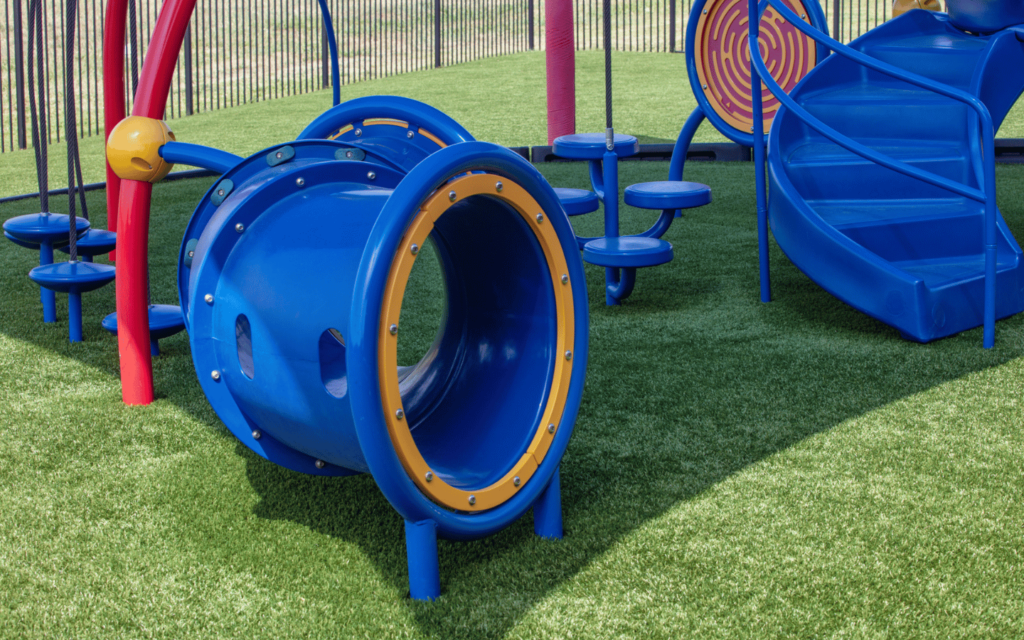
Artificial turf swimming pool areas
Pool turf needs to be of sufficient quality to stand up to the heat of the sun, the UV light, and the chlorine in swimming pools—as well as the foot traffic.
It may also require specialist work to shape turf strips between pavers around the pool. A 500-sq. ft. area around a swimming pool with turf strips will likely cost around $7,500-8,000.
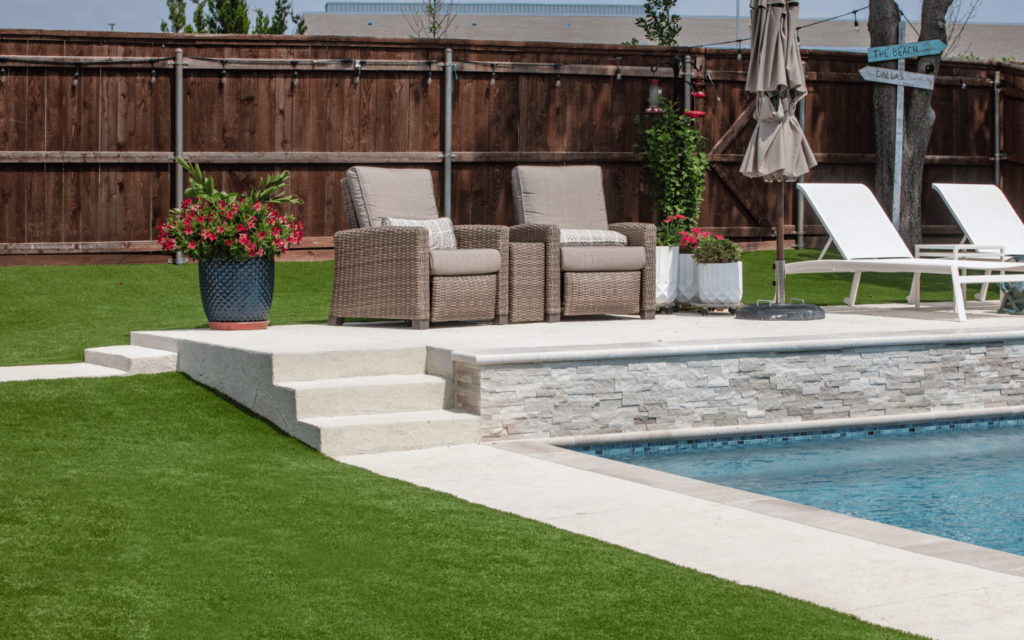
Artificial turf sports fields
Sports field turf needs to be very resilient and hard-wearing whether it’s designed for football, baseball, soccer or another purpose. If nylon-based turf is used, this can add to the overall cost of the artificial turf.
Professional artificial turf football fields usually cost between $750,000 and $1,350,000 but don’t let this put you off. For backyards, public parks, schools, etc. turf sports fields are more affordable than they used to be—and of course, pay back the investment every year with low maintenance requirements.
For instance, a scaled-down artificial soccer turf field (130 ft x 65 ft) is likely to cost somewhere between $80,000 and $140,000. One like this will cost a lot less than that:

Artificial turf pet areas
Pet turf systems require high durability and antimicrobial properties to remain hygienic and long-lasting. This adds to the cost because you need turf capable of withstanding what your pet throws at it—especially if you have a large dog using a limited space or several dogs using the turf area.
A dog-friendly 1,000-foot lawn area may cost around $10,000-$15,000.
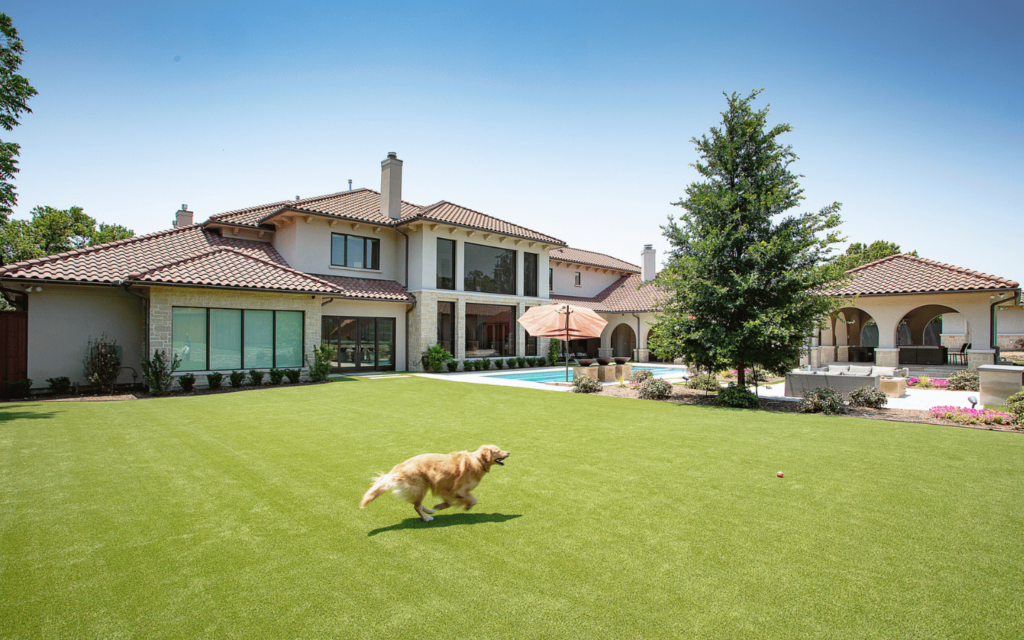
DO THE BENEFITS JUSTIFY THE COST OF ARTIFICIAL TURF?
Let’s review the main benefits of high-quality artificial turf so that you can assess if the costs are worth switching from real grass:
- Looks immaculate all year with virtually no effort
- Pays back the investment after around five years with a much lower cost of ownership
- Saves water (a big benefit for drought areas)
- If recycled, can be considered more eco-friendly than real grass
- Very low maintenance—no mowing, fertilizing, seeding, aerating, pesticides, etc.
- UV, chlorine, and weather-resistant
- Can be used all year round if drainage has been professionally managed
- Durable—lasts 10-20 years (depending on usage and maintenance)
- Flexible—can be used for many purposes
- Pet-friendly
- No mud, grass clippings, divots or bald patches
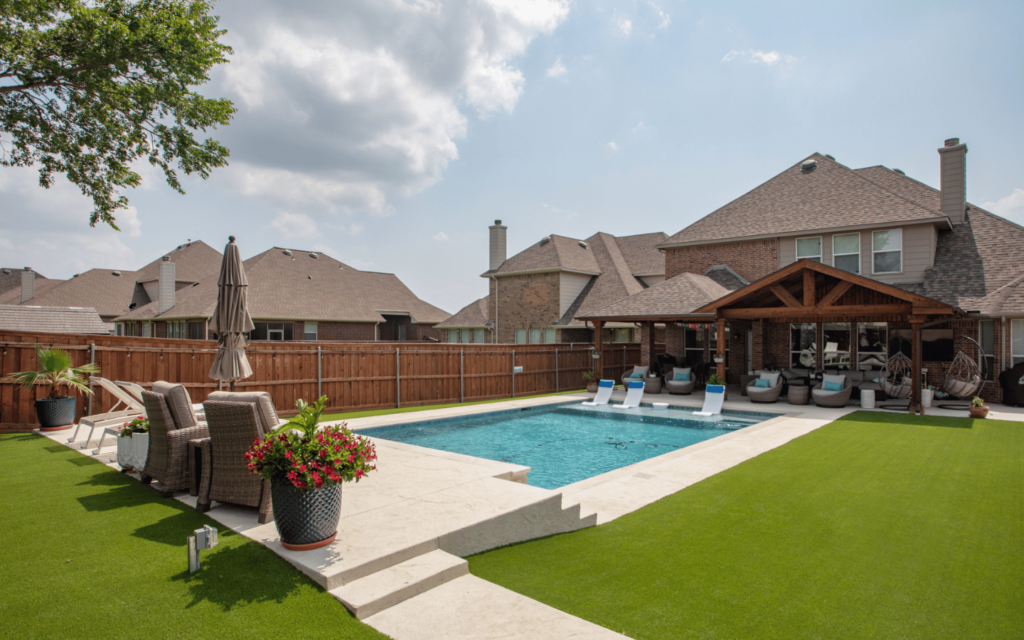
FAQs
Is artificial grass expensive?
Artificial grass is more expensive to install than real grass but the investment saves money year over year on low maintenance requirements. Generally, artificial turf pays for itself after about five years and can last up to three or even four times as long as that.
How long does artificial grass last?
The high-quality synthetic grass installed by Rocky Mountain Turf generally last 12-15 years even with medium traffic — and often up to 20 years or more with a professional installation and some basic maintenance.
Do you need a permit to install artificial grass?
In Utah, depending on where you live, you may need a permit to install artificial grass. For instance, a permit is required for artificial grass in Ogden City whereas in Orem City, no permit is needed.
In Salt Lake City, city zoning laws dictate that turf must not cover more than 33 percent of the area that should be covered by vegetation.
How much does it cost to maintain artificial grass?
Artificial grass doesn’t completely remove maintenance costs for artificial grass but reduces these costs to a few hundred dollars per year compared to thousands of dollars in most cases for natural grass.
The maintenance costs associated with artificial turf are the costs of cross-brushing, minimal watering to remove dust and debris, and infill replacement. Dogs may add to these costs with enzyme cleaners and deodorizers required.

Save time AND money with artificial grass…
Despite the higher initial cost, artificial grass is highly cost-effective over the many years of its life, saving time and money on maintenance year after year compared with real grass.
This, together with its pristine appearance, durability, and all-weather features mean that it can spruce up any yard and make it an attractive option for homes and businesses in Utah.
The Rocky Mountain Turf team has been installing high-quality artificial turf since 2014. Contact us for a quote.









